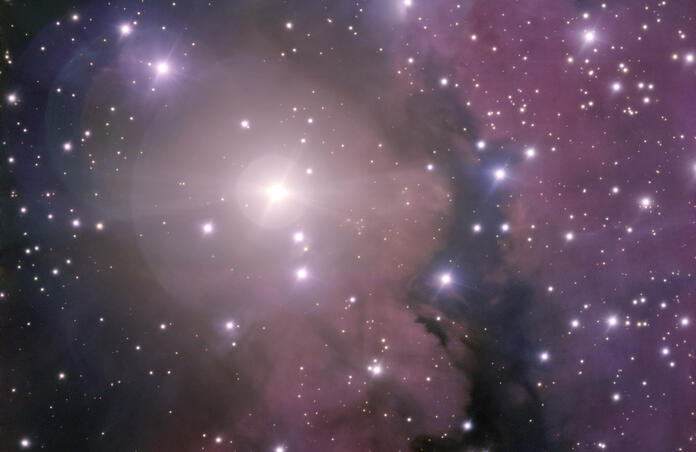ESO'S VLT captures a breathtaking H II region

Astronomer's favourite instrument on ESO'S VLT took a beautiful shot of H II region DG 121.
The image was taken with what astronomers like to call “the Swiss army knife of instruments at Paranal”: the FOcal Reducer/low dispersion Spectrograph 2 (FORS2) instrument on the European Southern Observatory’s Very Large Telescope. It can detect objects with magnitudes as low as ~25 and that in various wavelength bands, which means it has been used to observe an incredibly wide array of objects over the last 20 years. Recent publications using FORS2 data were concerned with Wolf-Rayet stars, brown dwarfs, comets, Saturn’s moons, galaxy clusters, distant quasars … – and also objects like nebulae and specifically H II regions like DG 121, located in our Milky Way galaxy in the southern constellation Puppis. For the observation you see as the cover image, four filters covering the visible part of the spectrum were used, including the narrowband filter Halpha, designed to target a specific wavelength to trace the presence of elements, in this case ionized Hydrogen.
You can read everything about H II regions in the Academy article, but in summary they are a type of emission nebula mainly composed of ionized hydrogen – which means nearby young stars’ ultraviolet radiation removes the electron from the Hydrogen atom, emitting light in the process. DG 121 is also catalogued as RCW 7: the Dorschner-Gurtler one is a directory for reflection nebulae, while Rodgers-Campbell-Whiteoak lists H II regions. It has also an “IRAS” number, an abbreviation which indicates faint sources. At first, it might seem confusing to use all these names and it is true that various scientific papers deal with the merging of catalogues, combining and correcting the lists that were previously put forward. At the same time, conventions within the different fields of study in astrophysics mean that a specific nomenclature will be used in the study of stellar evolution, while to study the structure of a spiral galaxy (the type that contains star-forming H II regions) the galactic coordinates of the objects might be used instead.
The bright star at the centre of the image is HD 60068, it is classified as a Far UV Space Telescope (FAUST) source. This is yet another acronym to catalogue celestial objects, which is dedicated to stars and galaxies detected with the FAUST instrument on the first Atmospheric Laboratory for Application and Science (ATLAS) mission in 1992, with which over 4698 galactic and extragalactic sources were found. In the case of DG 121, the observation of this bright star supports the idea that it’s young, massive stars that produce the UV radiation required to ionize the surrounding hydrogen gas. These can only be found in galaxies were star formation takes place, aka spiral galaxies like the Milky Way and irregularly shaped galaxies, but not elliptical ones.
These H II regions typically have irregular structures without clear boundaries, giving them a hazy appearance which makes them perfect targets for astrophotography!
All image credits to ESO.
